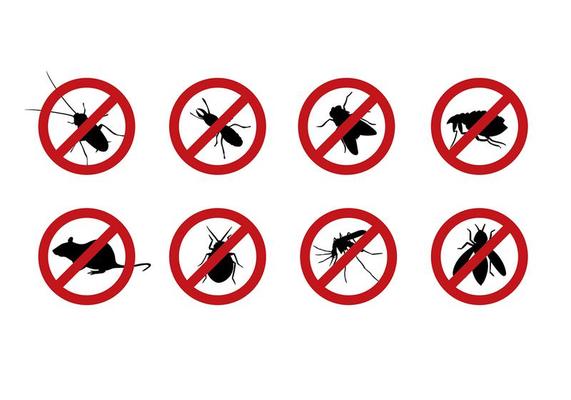Professional A1 Charlotte Bed Bug Exterminator - Quality Solution Ensured
Professional A1 Charlotte Bed Bug Exterminator - Quality Solution Ensured
Blog Article
Bed Bug Therapy Break Down: Contrasting Chemical Vs. Non-Chemical Solutions
In the world of insect control, especially when dealing with the consistent issue of bed insects, the choice in between chemical and non-chemical treatment services can be an essential one. Both strategies provide unique advantages and disadvantages, influencing variables such as efficiency, security considerations, and total expense. By checking out the nuanced details of each method, a more clear understanding of which path to go after in resolving a bed bug infestation can be obtained.
Performance of Chemical Therapies
Chemical treatments for bed bug invasions have been widely recognized for their powerful and fast efficiency in eliminating these bugs. When thinking about the efficiency of chemical therapies, it is vital to understand that they can supply a comprehensive and fast option to a bed bug problem.
Furthermore, chemical therapies have the advantage of supplying residual results, suggesting that they can proceed to eliminate bed bugs even after the first application. This residual activity is especially useful in combating any possible re-infestations. Additionally, the quick activity of chemical treatments can bring alleviation to people dealing with serious bed pest invasions, allowing them to reclaim control of their living rooms promptly.
Safety And Security Worries With Chemical Solutions
One vital aspect that needs mindful factor to consider when using chemical options for bed pest treatment is making sure the safety of residents and the environment. While chemical therapies can be efficient in eradicating bed insects, they may posture threats otherwise dealt with correctly. One of the main security interest in chemical solutions is the potential damage they can trigger to human wellness. Exposure to specific chemicals utilized in bed bug therapies can result in respiratory system issues, skin inflammation, or other unfavorable reactions, especially in people with pre-existing conditions or level of sensitivities. In addition, incorrect application or dose of chemical pesticides can lead to toxic deposits lingering in the treated area, positioning long-lasting wellness threats to occupants.
Furthermore, the ecological impact of chemical options is an additional substantial factor to consider. Some pesticides utilized in bed pest therapies may be hazardous to advantageous insects, wild animals, and ecosystems if they leach into the soil or water systems. It is important to make use of chemical treatments sensibly, adhering to security standards, and taking into consideration much less toxic alternatives to alleviate these dangers and guarantee the safe and reliable management of bed pest problems.
Advantages of Non-Chemical Strategies
Considering the possible safety issues and environmental effect connected with chemical services for bed insect therapy, discovering non-chemical approaches provides a promising choice with several distinct advantages. Non-chemical methods offer a much safer alternative for households, especially those with family pets, people, or kids conscious rough chemicals. These methods get rid of the threats of exposure to toxic substances, minimizing the possibility for damaging health effects. In addition, non-chemical treatments are eco-friendly, as they do not add to air or water pollution, making them a lasting selection for pest control.
In addition, non-chemical remedies can be effective in targeting bed pests, including hard-to-reach areas where chemical therapies may not permeate - A1 pest control services charlotte. Methods such as warmth treatment, vacuuming, steam cleansing, and cushion encasements offer complete elimination without the use of harmful chemicals.
Limitations of Non-Chemical Treatments

Additionally, non-chemical treatments typically need several applications to attain effective removal. This can be taxing and may not constantly guarantee full elimination of all bed pests and their eggs, specifically in hard-to-reach or hidden areas.
Moreover, the success of non-chemical therapies greatly counts on proper implementation and thoroughness, which can be testing for individuals without professional proficiency. Insufficient application of non-chemical techniques may cause incomplete eradication, causing consistent invasions and the demand for extra treatments.
As a result, while non-chemical therapies have their benefits, it is vital to recognize these limitations and consider them when figuring out one of the most reliable strategy for taking care of bed bug infestations.
Cost Comparison: Chemical Vs. Non-Chemical Options
Given the restrictions connected with non-chemical therapies, an essential aspect to assess in the context of bed insect monitoring is the expense comparison between chemical and non-chemical choices. Chemical treatments normally include the application of insecticides by professionals, which can vary from $250 to $900 per room, depending on the intensity of the invasion and the size of the location to be treated. In comparison, non-chemical therapies like warmth therapy or heavy steam can be extra expensive, with expenses ranging from $1,000 to $6,000 for an entire home. While the preliminary expense of chemical treatments may appear lower, numerous therapies may be called for to completely get rid of the infestation, potentially enhancing the total price. On the other hand, non-chemical alternatives might offer a much more sustainable and environment-friendly solution, although they can be cost-prohibitive for some people. Inevitably, when thinking about the cost of bed insect therapy alternatives, it is essential to evaluate the in advance costs versus the efficiency and long-term sustainability of the chosen method.
Final Thought

Taking into consideration the potential security worries and ecological effect connected with chemical services for bed insect treatment, discovering non-chemical techniques presents an appealing choice with several unique More Help advantages.Given the limitations linked with non-chemical treatments, an essential facet to examine in the context of bed bug management is the cost comparison between chemical and non-chemical alternatives. In comparison, non-chemical therapies like heat treatment or steam can be more expensive, with prices varying from $1,000 to $6,000 for an entire home. Source While the preliminary price of chemical treatments might seem reduced, numerous therapies might be called for to totally eradicate the invasion, potentially enhancing the general price.In verdict, when contrasting chemical and non-chemical bed pest therapy alternatives, it is important to take into consideration efficiency, safety and security, advantages, restrictions, and price.
Report this page